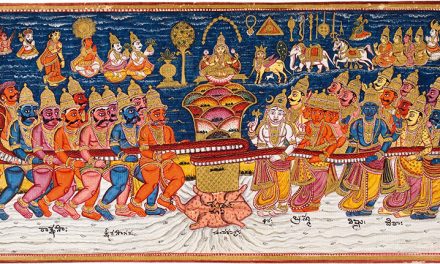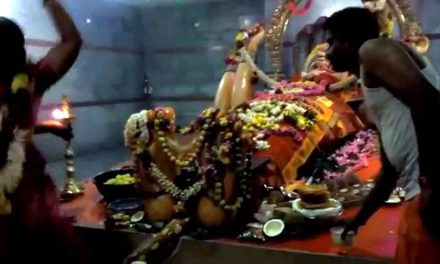At an altitude of 2,150 ft, Kapilash Temple is known fondly by the devotees as the ‘Kailash of Orissa’. The temple is located atop a lush green hill at Dhenkanal district, a region that was once part of the ancient capital of Keshari kingdom, known as Chowduar.
Surrounded on all sides by the Eastern Ghats, Kapilash is stunningly picturesque. The people of the region believe that Kapilash is the abode of Lord Shiva Chandrasekhar. The temple, where Lord Chandrasekhar resides, is surrounded by a cluster of other holy shrines, including the temples of Narayana and Viswanath. Nearly 2,000 steps lead up to the main temple, and there is also a serpentine road that allows pilgrims to drive up to the main temple.
In nearby Saptasajya are the temples of Saptarshi and Raghunath, where the Pandavas took shelter while in hiding.
The abode of Shiva Chandrasekhar comes alive during the most important festival of the region, Shivratri. Thousands of pilgrims gather here from various parts of the state, and around the world. Devotees carry the water of the river Mahanadi in earthen vessels on their shoulders, trekking barefoot up to hill, where they pour the water offering on the Shivlinga before taking darshan of the richly ornamented Deity of Lord Shiva.
Two inscriptions preserved near the temple provide conclusive proof regarding the construction of the temple, one being the “Brishava” inscription and other the “Kalasha” inscription, the latter of which is recorded in the Epigraphica India Vol. XXXIII. The Kalasha inscription evidences the fact that the main temple was constructed in 1246 by Narasingh Dev-I, who was also known as Langula Narsingh Dev, the builder of the world famous Sun temple at Konark.
As per some historians Ananga Bhima Deva father of Langaula Narasingh Dev was associated with Kapilash and was instrumental in building, the Viswanath temple which is older than Lord Chandrasekhar’s temple. Langula Narasingh Dev a prolific and aesthtic builder, was responsible for the creation of some of greatest sculptures in Orissa and it is believed that the iron beams required for the Konark temple were constructed near Dhenkanal. From the above facts it is established that the Ganga dynasty had close liaison with the area, in and around Kapilash, it was Langula Narasingh Dev who constructed the main temple in 1246 A.D. It was Langula Narasingh Dev who donated two villages named Nagena and Bhimapur for the day-to-day management of the deity.
This inaccessible shrine received attention and patronage from all the Rulers of Ganga ynasty and the subsequent Gajapaties belonging to the surya dynasty. There are many ancedates associated with rulers of the Ganga dynasty, who came to Kapilash to worship Lord Chandrasekhar at the time of serious crisis. They held large sacrifices and ceremoniues to appease the Lord, asking him to deliver them from their suffering condition. vPratap Rudra Dev, of the Gajapaties of the Surya dynasty, accidentally killed a bull and in order to cleanse himself of this great sin, worshipped Lord Chandrasekhar for a very long time during this period. He worshipped the Lord with fire yajnas and Maharudravisekha, and arranged for recitatin of the Mahabharata. Pratap Rudra Dev also constructed the Japamandap and the Baladev Jew temple at the Deogaon foothills.
Historically, Kapilash has been abode of many sages and seers, the most prominent among them being Sridhar Swami,Gorekha Nath, Parsuram Nath and Mahima Gosain. Gorakh Nath and Parsuram Nath came to Kapilash in 10th century A.D. and 16th century A.D.
Sridhar Swami made this hilltop shrine his abode in the 14th century A.D. Sridhar Swami, who later became the 10th Sankaracharya of Puri, reached his intellectual peak at this place. His treatises on Srimad Bhagavat Geeta, Vishnu Purana and Sripadyavali were written here during his long stay.
The Chaitnya-caritamrita also states that Lord Chaitnya sometimes visited Kapilash, and there are many stories told by local villagers about ancient Siddha beams that are seen entering and living in the mountain range, even up to today.












